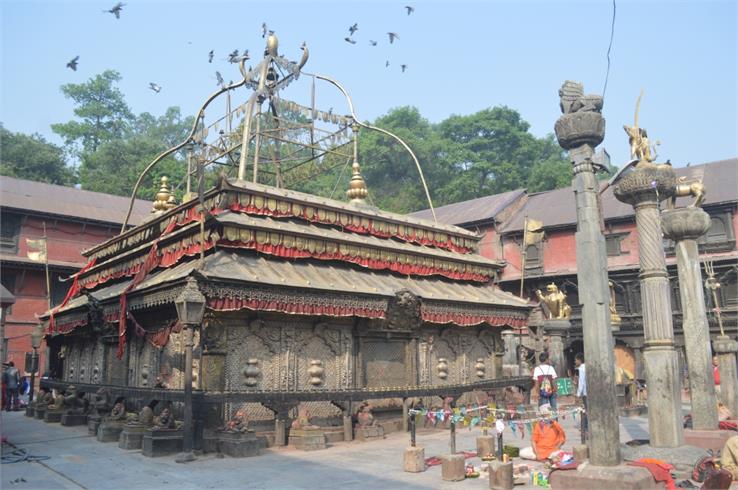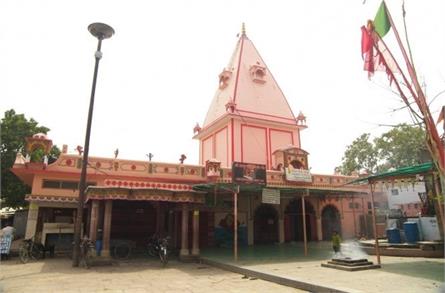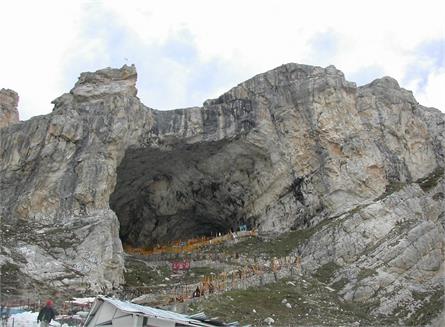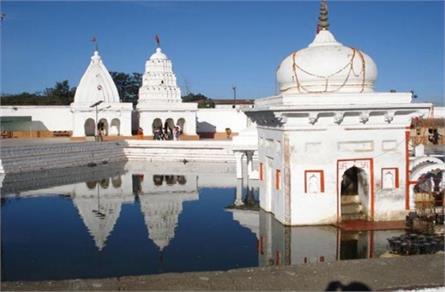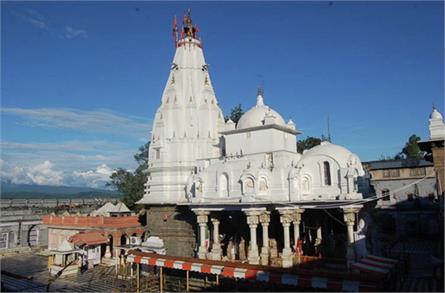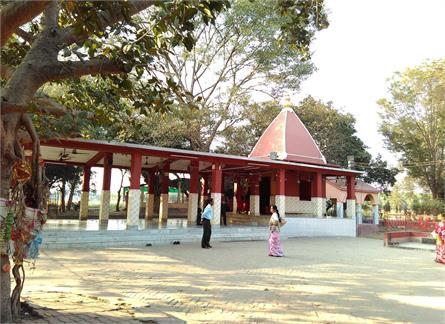Guhyeshwari Temple, Kathmandu
Location: Kathmandu 44621, Nepal
Temple Timings: 07:30 am to 07:30 pm
Festivals: Navaratri, Durga Ashtami, Shivratri
About the temple
Guhyeshwari Shaktipeeth is one of the 51 Shakti Peethas of Goddess Sati. The temple is situated on the other side of the Bagmati River near Pashupatinath temple. The presiding goddess of the temple is known as ‘Guhekali.’ It is one of the UNESCO World Heritage Sites in Kathmandu. Guhyeshwari is made up of two words Guhya (Secret) and Ishwari (Goddess). On the occasion of Navratri fair, devotees from many countries, including India, Bhutan are coming to visit. Followers bow their heads in front of Goddess and pray to fulfill their wishes. According to statistics, every year, six lakh devotees from India come to Pashupatinath, and most of them also visit Guhyeshwari Temple. The divine energies temple of Sati and Shiva have dwelled in the form of ‘Mahamaya’ or ‘Mahashira’ and ‘Kapali,’ respectively. It is considered a prominent pilgrimage center for Tantric worshipers. The temple is also discussed in the various sacred books, such as Shiva Tantra, Kali Tantra, Chandi Tantra, and Rahasya. The temple has a spiritual female power force.
Also Read: Why is Maha Shivaratri celebrated?
Customs and Rituals of the temple
The glory of Guhyeshwari Temple is also discussed in various sacred books, such as Chandi tantra, Kali tantra, Shiva tantra Rahasya. The temple is considered to be the most powerful Tantra Peeth built above the seventeen cremation ghats. The temple has a spiritual female power force, and the idols are made up of gold and silver. Tantric customs and rituals are performed in the temple to please the goddess.
According to religious beliefs, if a marriage is performed in the temple, they will be fortunate soulmates for the next six generations and live a peaceful life. Moreover, married women revere goddesses for the great health of their husbands.
Best time to visit
From October to March is the best time to visit the temple as the weather remains pleasant. Major festivals are celebrated in the temple during these months.
Also Read: Khajji Nag Temple
History of the temple
Guhyeshwari Shaktipeeth is about 2500 years old. According to the Puranas of Hinduism, wherever the pieces of the body of Sati, the clothes or jewelry worn fell, a Shaktipeeth came into existence. These are called holy places of pilgrimage. These pilgrimage spots are spread across the Indian subcontinent. The Devi Purana describes the 51 Shakti Peeth.
It is believed that both knees fell here of Goddess Sati, after which the construction of this temple started a few hundred years ago. King Pratap Malla built the temple in the 17th century. After this, the ninth king of Kantipur renovated this temple and established the temple in the Pagoda style.
Also Read: The Divine Power of 12 Jyotirlinga
Places to see around
- Swayambhu Stupa, Kathmandu
- Pashupatinath Temple, Kathmandu
- Boudha Stupa
- Kathmandu Valley
- Garden of Dreams
- Shivapuri Nagarjun National Park
- Rani Pokhar
- Shivapuri Hill
- Patan Durbar Square
- Champa Devi Summit
- Bhimsen Temple
- Kathmandu Durbar Square
- Bhaktapur Durbar Square


